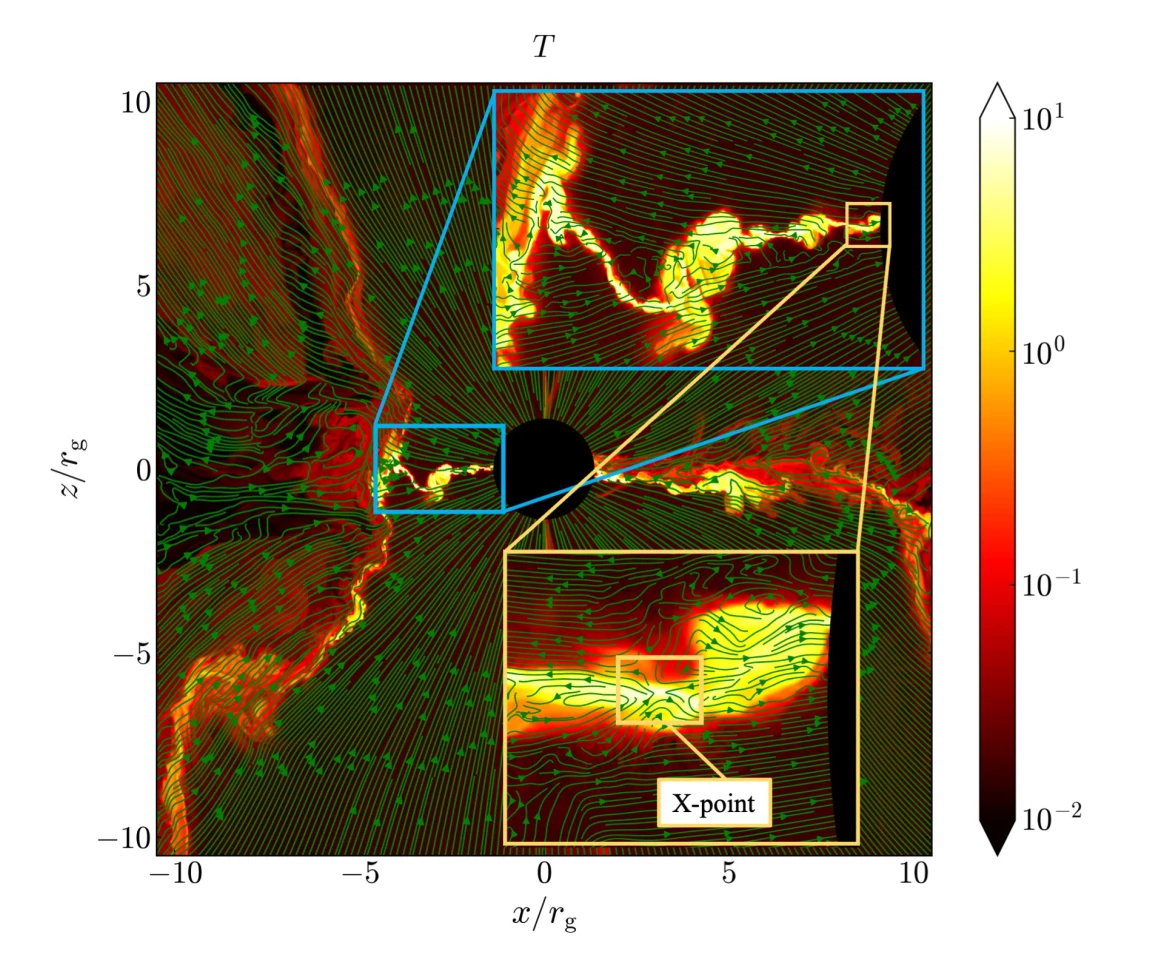Contrary to their name, black holes are known to fire off flares from time to time, but exactly how this happens is shrouded in mystery. High-resolution simulations have now revealed how twisting magnetic fields can throw off huge amounts of energy.
Famously, the gravitational pull of black holes is so strong that not even light itself can escape. That makes the idea of flashes of light from black holes seem strange, but it happens pretty regularly. These don’t come from within the black hole itself but from its accretion disk – the hot, bright ring of material orbiting and falling into the object.
Most of the time, flashes of light are caused by dust and gas falling in, which heats up the material and makes it glow brightly. But other times, flares are seen shooting away from the black hole, and these have been harder to explain. It was long suspected that they had something to do with the intense magnetic fields around these objects.
So for the new study, astronomers investigated by conducting the most detailed simulations of black holes ever run. The project underwent millions of computing hours over three supercomputers – Longhorn, Popeye and Summit, the second most powerful supercomputer in the world. The end result was a simulation of a black hole with a resolution over 1,000 times higher than that of previous attempts, and with that came a more complete picture of what’s going on when a black hole flares.
The simulation showed that as material flows into the black hole, it drags the magnetic field lines in with it. These field lines start stacking up near the event horizon, until they begin blocking the material from falling in. The pressure of the material trying to fall in squeezes and flattens the magnetic field lines, until they form lanes pointing either towards or away from the black hole.
When field lines running in opposite directions meet, they can snap their existing ties and connect to each other instead. That transfers energy to the hot plasma around it, flicking some of the particles into the black hole and some of them out into space. The latter is visible as flares.

“Without the high resolution of our simulations, you couldn’t capture the subdynamics and the substructures,” said Bart Ripperda, co-lead author of the study. “In the low-resolution models, reconnection doesn’t occur, so there’s no mechanism that could accelerate particles.”
But the material ejected by this magnetic reconnection might not get away from the black hole for long. The team says that the hot blob of plasma can end up in orbit around it, with examples seen around the supermassive black hole at the center of the Milky Way.
The simulation also showed that these flares can be cyclical. The magnetic field energy wanes after a while, before eventually resetting and kicking off the process once again. This cycle of flaring events takes place on different scales for different black holes, from days to years, which is also consistent with observations.
The researchers say that future observations by the just-launched James Webb Space Telescope could confirm whether what’s happening in the simulation is what happens in the real world.
The research was published in The Astrophysical Journal Letters.
Source: Simons Foundation





